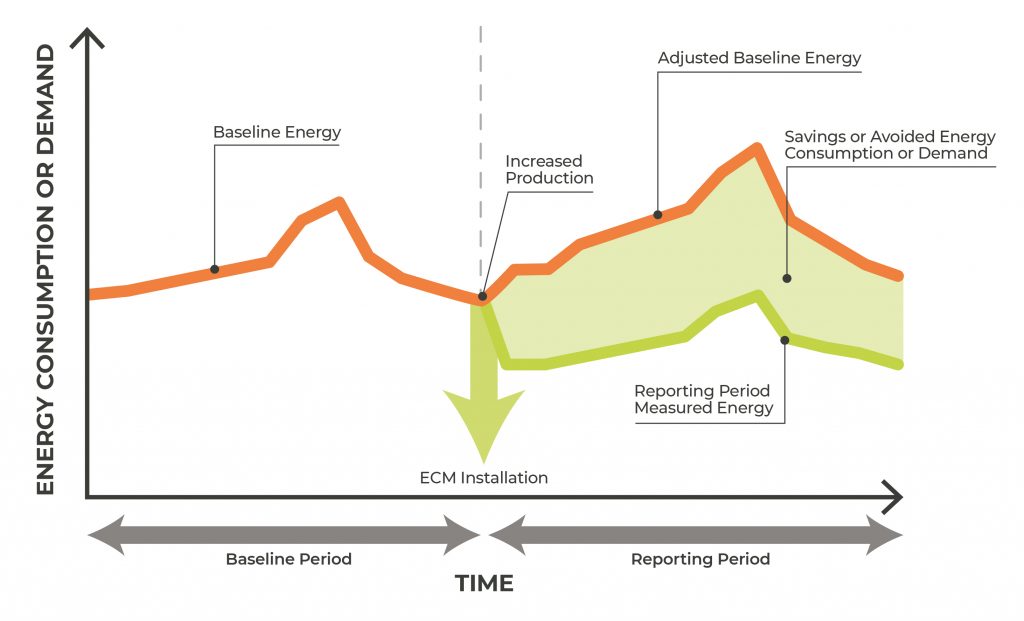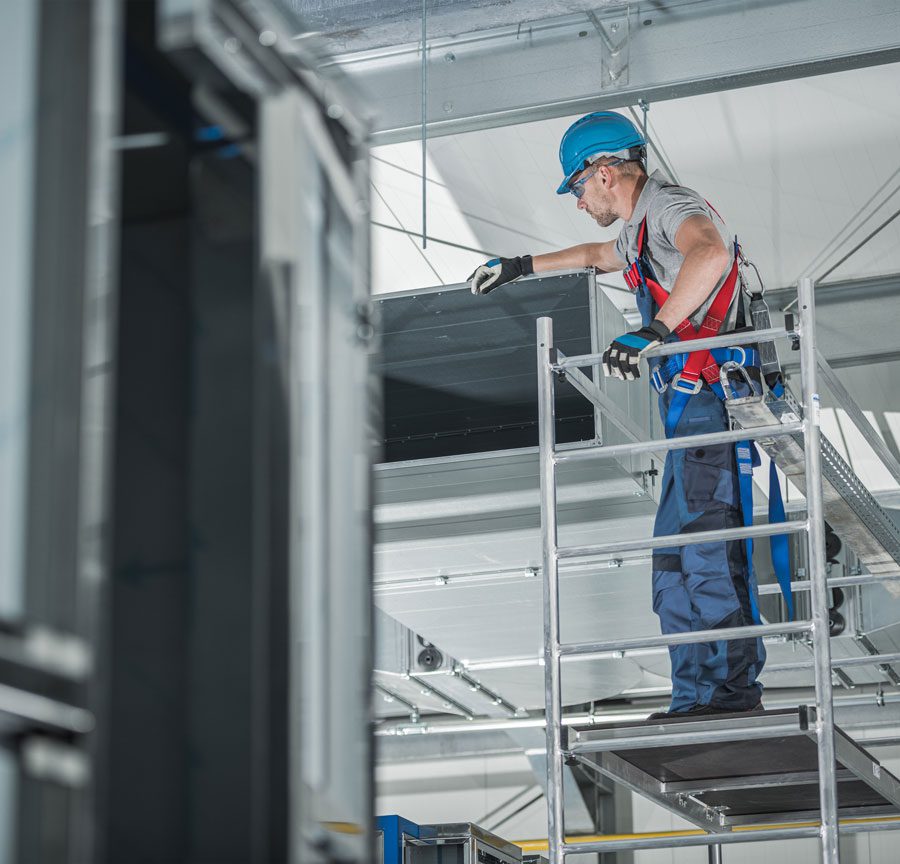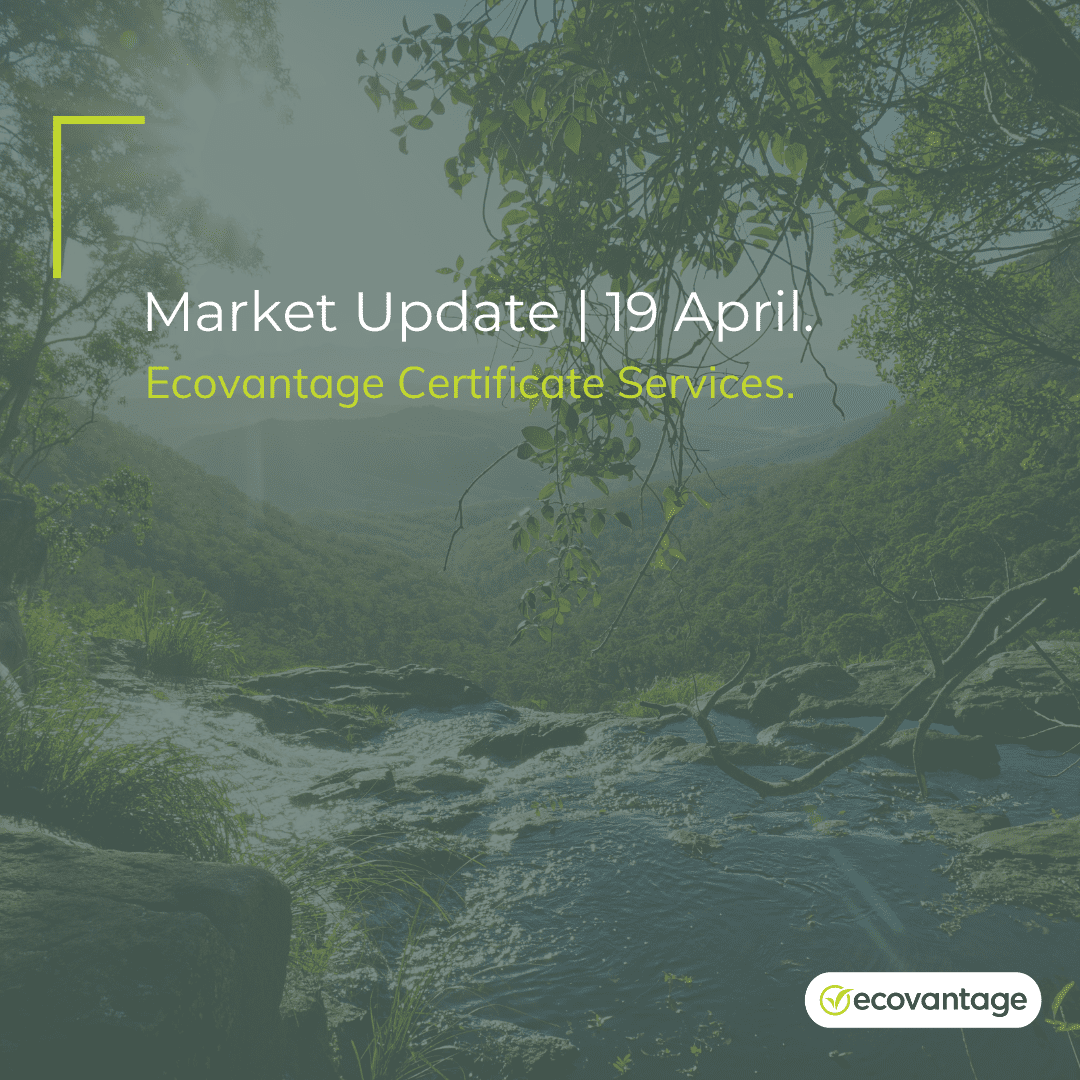Measurement and Verification (M&V) is the process of planning, measuring, collecting and analysing energy consumption data.
Measurement of energy savings involves measuring a site’s energy usage before and after the implementation of an Energy Efficiency
Measure (EEM) and data analysis (including developing mathematical models).
Verification is the process of verifying the EEM is operating as expected and continues to operate as intended. Certificates for abatement can be awarded for energy savings achieved as a result of the EEM.


Deemed activities, such as commercial lighting and heat pump upgrades in Victoria and NSW, follow a standard calculation to estimate energy savings based on the approved product and typical hours of use.
M&V is different to deemed activities because the energy savings are measured rather than calculated.
Deemed activities are useful for one-for-one replacements and are usually useful for small to medium Energy Efficiency Measures (EEMs). For instance, replacing an electric storage hot water system with a heat pump.
M&V may be used for projects where:
- Custom EEMs designed specifically for the site
- Multiple EEMs are occurring
- Energy savings are expected to be large
- The EEM involves fuel switching
- The deemed activity is not available for the upgrade or reflective of the expected energy savings
- Multiple upgrades are occurring at once
- The energy savings are high
- The upgrade involved fuel switching
Partnering with us for M&V Services.
At Ecovantage, we partner with installers, suppliers, contractors and end-users, to create energy efficiency and carbon certificates on a wide variety of EEMs through M&V projects.
Ecovantage will guide you through the complete M&V process, from eligibility to compliance to certificate creation. Ecovantage works with all stakeholders to support end users with their capital expenditure, promote energy efficiency and renewable energy projects, and reduce emissions.


Schemes
Australian Carbon Credit Unit (ACCU) Scheme
Location: Federal
Certificates Created: Australian Carbon Credit Units (ACCUs)
Energy Savings Period: Up to 7 years
Energy Savings Scheme (ESS)
Location: New South Wales
Certificates Created: Energy Savings Certificates (ESCs)
Energy Savings Period: Up to 10 years
Victorian Energy Upgrades (VEU) Program
Location: Victoria
Certificates Created: Victorian Energy Efficiency Certificates (VEECs)
Energy Savings Period: Up to 10 years
Retailer Energy Productivity Scheme
Location: South Australia
Certificates Created: Retailer Energy Productivity Scheme (REPS)
Energy Savings Period: Up to 10 years
M&V Project Types.
Our M&V service covers all types of EEM projects, including:
- Energy Efficiency Upgrades
- Heating, Ventilation, and Air
Conditioning (HVAC) - Refrigeration
- LED Lighting
- Air Compressors
- Steam Boilers
- Water Boilers & Heaters
- Variable Speed Drives (VSDs)
- Heating, Ventilation, and Air
- Process Optimisation
- Building Management Systems
- Heat Recovery
- Production/Process Improvement(s)
- Onsite Renewable Energy Generation
- Solar PV
- Bio Energy


How Can Your Site Harness M&V?
There are significant opportunities for your site to leverage Measurement and Verification methods for a variety of projects and upgrades.
Any implementation that will save a single site energy equivalent to the listed recommended minimum savings, or multiple sites that cumulatively reach those minimum savings, is eligible to create certificates under Measurement and Verification methods.
State-based schemes create ‘White Certificates’. These certificates act similar to a rebate as opposed to being a verified carbon credit. The benefit of white certificate creation is that a site is able to monetise the certificates, and still claim the full benefit of the energy reduction in their carbon accounting.
The benefit of a federal scheme creating internationally recognised carbon credits, is that it lessens the financial constraint of purchasing that volume of carbon credits, plus they can account for the energy reduction. Many clients procure Australian Carbon Credit Units (ACCUs) for the purpose of surrender. The ability to provide an upgrade service that will produce ACCUs for a 7 year period is certainly an additional benefit.
Our team can assist in establishing the viability of each opportunity, from both financial and carbon perspectives.

 Victoria
Victoria




